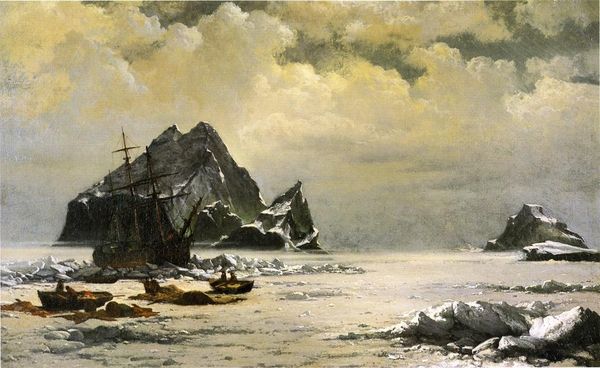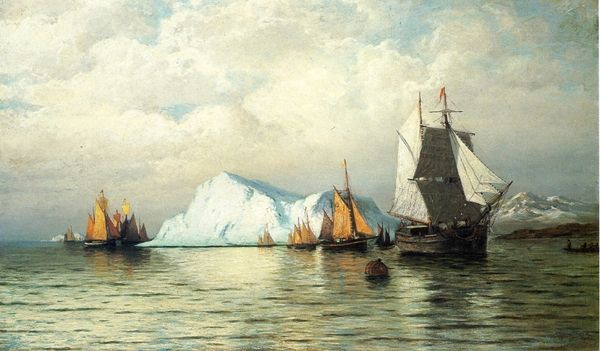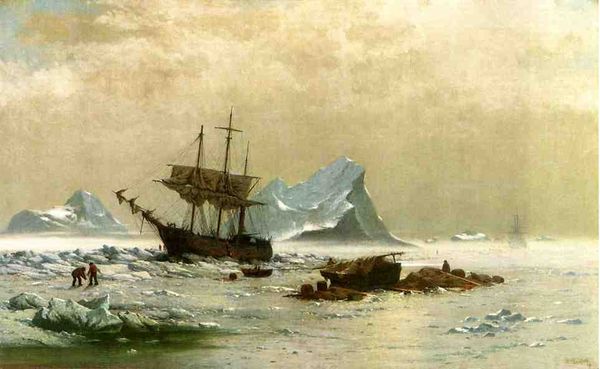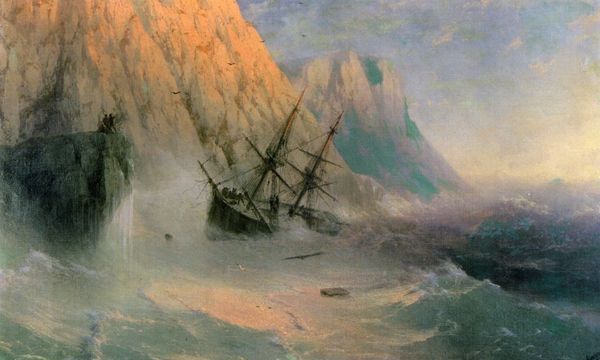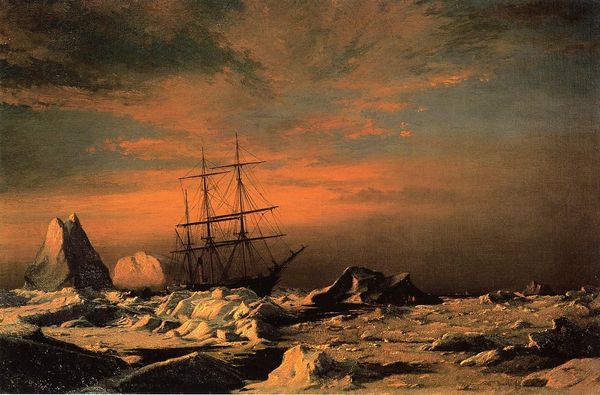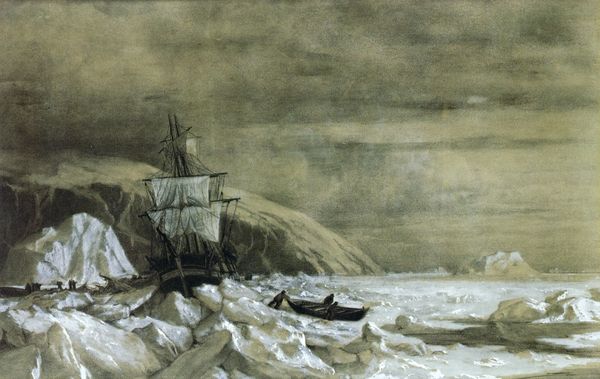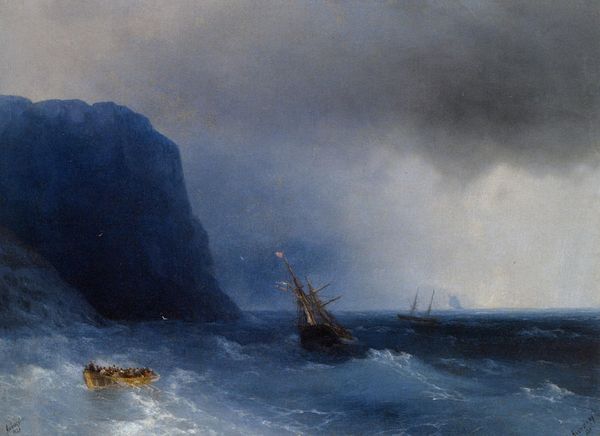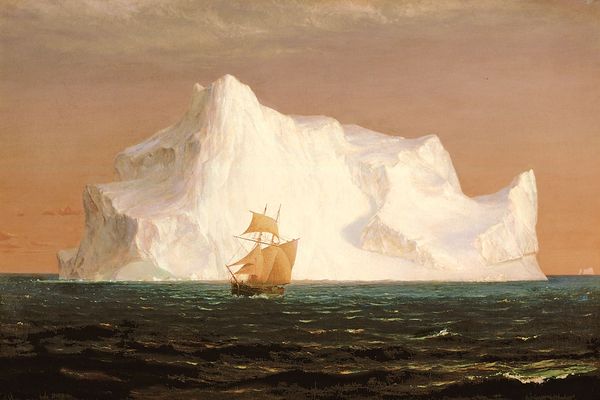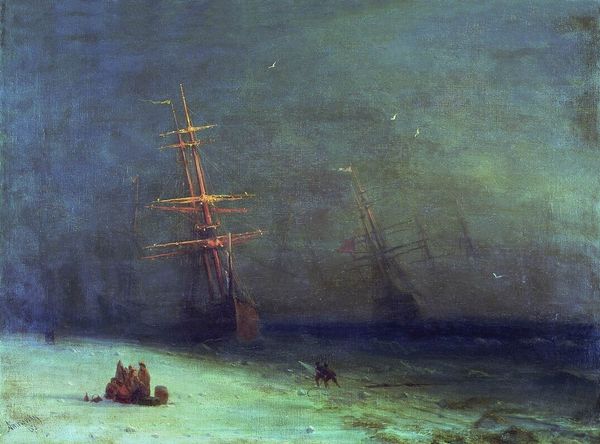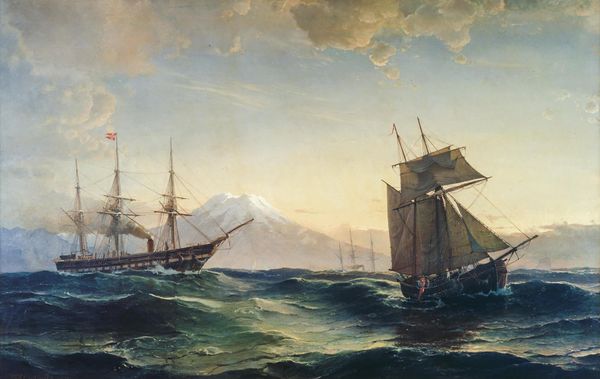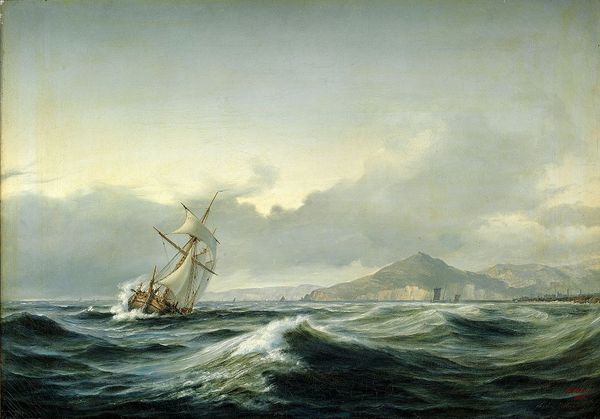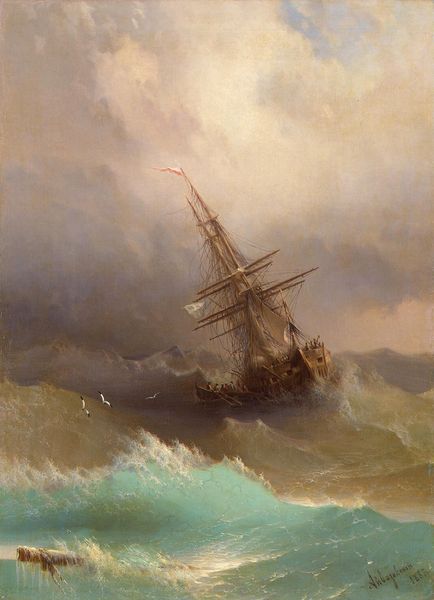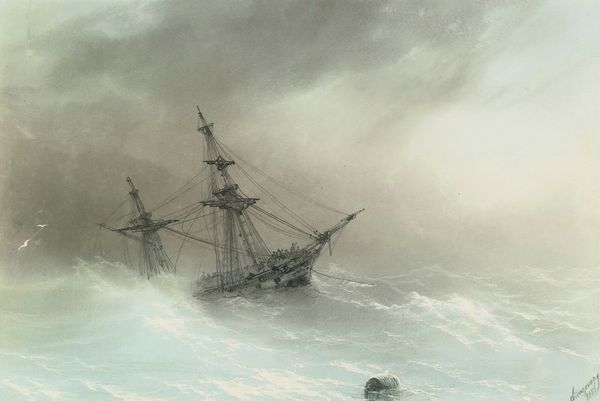
Copyright: Public domain
Editor: Here we have William Bradford's "Locked in Ice," an oil painting from 1882. The painting's muted color palette and the sight of the ship stuck fast create a feeling of isolation and fragility. What are your thoughts on the painting’s composition and the artist’s intent? Curator: The compositional structure is certainly quite compelling. Observe how Bradford has carefully arranged the primary vessel off-center, disrupting any potential for static symmetry. This placement, combined with the tilted angle of the ship itself, introduces a dynamic tension that heightens the sense of struggle. Editor: I see what you mean about the off-center placement creating tension. Curator: Indeed. Consider also the artist's use of light and shadow. Notice how the subtle gradations of tone across the icy landscape contribute to the painting's overall sense of depth and form. How do you perceive the relationship between the formal elements and the implied narrative? Editor: I guess I hadn’t thought about the gradations of tone so much, but that makes the ice look even more real, I think! The form makes me think of the sublime and humankind's inability to control nature. Curator: Precisely. Moreover, how the formal interplay of color, line and texture engenders a narrative open to constant and unending interpretation. Editor: I hadn’t considered the formal elements in conveying such a complex narrative about our relationship to nature’s power. It gives me a lot to consider! Curator: Agreed; engaging with it primarily in terms of the painting’s pure formalism yields a surprisingly complex appreciation.
Comments
No comments
Be the first to comment and join the conversation on the ultimate creative platform.

